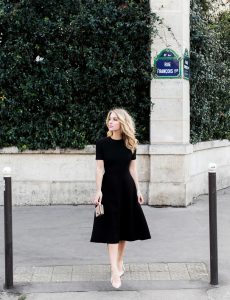Sometimes we need money really quickly, and a lot of the time it’s for an emergency that we didn’t know was coming. This can totally be solved by using an emergency fund.
There’s a totally separate type of expense that we run into, these expected expenses are the perfect times to using sinking funds. Before starting this blog, I’d never even heard of a sinking fund before and now I’m hooked and want to have a sinking fund for every aspect of my life!
Understanding sinking funds is key to being prepared for expenses in advance, and I’m here to teach you what they are, and how to use them. I know you’re probably a busy, busy bee and might not be able to get all this information at once. I highly suggest you pin this content for later so you can look back at a more convenient time!
Our blog posts often contain affiliate links, you can learn more in our very long (and very boring) affiliate disclosure!
If you love this kind of personal finance content, please join my email family! We love sending our best stuff straight to your inbox.
Table of Contents
Beginner’s Guide to Sinking Funds
So, the first step to getting sinking funds set up is to understand exactly what a sinking fund is, so let’s dig right in. Think of a sinking fund as a pot of gold at the end of a rainbow. A sinking fund is essentially a nice pile of money that you choose to collect with a specific purpose in mind, and you use this money for that one thing and only that one thing.
Sinking funds are the best way to save money for a specific event that you know is going to happen either every year, or ever few months.
Some examples of popular sinking funds:
- Christmas
- Car Repairs
- Vet Check-Ups
- Home Repair
- Etc…
So, let’s say you put away $100 a month because on average your car repair cost for a year is a little over $1000. This means you’ll have a nice pile of cash to be able to pay your car repairs without having to go into credit card debt. And bonus you get to earn a bit of interest on this money as well. Sounds pretty good right?
Why are Sinking Funds a Good Idea?
Most of us spend a lot of our time reacting to things. We react to other people, we react to the weather, we react to notifications on our phone, but the one time we don’t want to be reactive is when we’re thinking about our finances!
When we need money quickly we often take a reactive path, rather than a proactive one.We’ll reach for our credit card and think about the repercussions later.
Sinking funds allow us to be proactive, not reactive. It makes it easier to plan for the future and not just let things happen to us! Being proactive is a huge quality of the most highly successful people, and adopting this way of life is a great way to become financially successful.
How to Set Up A Sinking Fund
The first thing to figure out when you decide to start using sinking funds is where you want to keep the money. There are a few rules to where you should keep your sinking fund money.
The first, is that you want to make sure the money is easily available to you. This means that you want to have easy access to that money, without incurring penalties for withdrawing the money early.
The second, is that you should never leave your sinking fund in a high-risk investment where you can lose all the money. Why? Because this money has a purpose and you don’t want to lose it all.
The best place to leave a sinking fund is just in a regular ol’ savings account. This is because it’s easiest to take the money out of a regular savings account, you can’t lose the money, and savings accounts have a decent interest rate (not amazing, but decent).
The only thing you need is a good budget, because its’ very hard to keep adding money to a sinking fund if you don’t have a plan for every dollar. What’s the best budget for beginners? I always recommend using the Zero-Based Budget because it’s simple, and can make your life a lot easier.
All you need to do is start putting money into a sinking fund is add an extra line item in your budget for each sinking fund you decide to create!
How Much Money Should You Put in Sinking Funds Each Month?
How much money you put away each months depends entirely on when the event could occur, and how much it’ll cost. If you’re planning for something that only happens once a year, you can put away less each month. If it’s something that might happen tomorrow, you may want to increase this buffer quicker to be safe.
The nice thing about sinking funds is once you hit a certain amount of money without touching it, you can stop funding it entirely.
For example, if you need $2,000 in your technology fund just in case your laptop breaks and you hit that $2,000 mark, you can start using that $150+ a month on something else!
Which Sinking Funds Should You Have?
This isn’t a totally comprehensive list of every sinking fund you’ll ever need, that depends on your personal circumstances and what you need to be saving money for. One person may need a podcast equipment sinking fund, someone else may have a kid’s birthday sinking fund. You never know! So here are a few sinking funds that are pretty universal:
#1 – Car Repair
Having a car means throwing a lot of money at a big metal box that just gets you from one place to another. Fun stuff, right? Wrong.
But if you plan to own a car in your lifetime, it’s something you need to plan for. Having a car means that you’ll inevitably have to pay some kind of repairs because they break.
You can use your car fund for things like your yearly sticker, your license renewal, speeding tickets, new floor mats, any repairs, pretty much anything that is involved with owning a car.
#2 – Dog/Cat/Bird/Etc Costs
We never want to think about our pets getting sick or passive away. If I even for a second think about my puppy passing, I start crying instantly, seriously. But animals aren’t invincible, and we need to plan for their injuries and illnesses as well.
Having a pet gets pretty expensive, so this emergency money can go to anything including yearly check-ups, medicine, new collars, leashes, dog food, and maybe even your pet’s birthday!
#3 – Home Repairs
If you own a home, you’ll have to fix something soon. It may be something small, like a light bulk, but it could be something huge like a brand new roof. You never really know what’s going to happen when you own a home and it’s always smart to be prepared.
Home repairs add up really quickly and it happens in the blink of an eye. Having that money in the bank can really change the way you treat your home, and a lot of the time you’ll pick more frugal, intelligent fixes.
#4 – Technology
If you’re anything like me, you’ve dropped a phone (or three) and cracked a screen. I once had a laptop literally overheat and start melting in the middle of a college semester. This is proof that some of the most expensive things we own can just break at a moment’s notice.
Putting a $500 phone or a $1,500 laptop on a credit card seems like a good idea at the time but it can take you months to pay it all back. This is why a technology sinking fund is very important.
This sinking fund could replace your laptop, phone, headphones, security cameras, etc.
#5 – Travel
Travel funds can really take two forms, one fun, and one not-so-fun. Of course, you can set up a sinking fund for a yearly family vacation to enjoy. However, the real sinking fund you should set up is a funeral/sickness sinking fund. I know, this is super depressing and morbid.
However, at any given time a family member could pass away or get really sicking without you having any notice and you may need to travel across the country (or even the world) to be able to be there for the funeral and be able to take care of your family.
Plane tickets are expensive and when it happens quickly you don’t have an opportunity to plan a cheaper ticket, so it’s really great to have a thousand or more dollars in the bank just to be prepared for these occurrences.
#6 – Christmas
Christmas always seems to be really far away, until it isn’t. Every year after Christmas I find myself saying “next year, I’m going to start saving for Christmas before summer! I’m going to be so prepared” but it never happens. Christmas never changes. It always comes.
Starting a sinking fund for Christmas presents is a great way to save yourself a ton of money in interest, as well as keeping your Christmas costs lower because you don’t over purchase as often when you use cash.
An Example of a Sinking Fund
Let’s do a quick example of exactly how sinking funds work in a real-life situation we all face.
Let’s say that Catherine is a mother of two young kids and is planning for next year’s Christmas. Her kids are still under 5 so she decides she wants to spend $250 on each of them as well as $500 on all other gifts (husband, parents, siblings, etc.). This means Catherine needs a total of $1,000 by December 25.
If she starts working towards his goal on January 1st, she’ll have 12 months to save this money. To know how much she needs each month, she’ll divide $1000/12 and discover she needs about $84 a month.
When you think of Christmas as $84 a month, instead of $1000 in December, it’s much less daunting and makes everything much less stressful.
Final Thoughts
Sinking funds can really change how you think about your finances and how you handle your money. You can start with just one or two that make the most sense for your life and go from there.
If you use any creative sinking funds, let me know in the comments below because I’d LOVE to add some new ones.










I have an ‘events’ sinking fund – this is just for when I need to buy tickets to something like shows, concerts, sports games and I love to enter running races – so it covers race entry fees too! It’s a fun addition to my regular sinking funds.
That’s awesome! tickets are SO EXPENSIVE and this is an awesome way to cover them!
I’ve never thought about setting up sinking funds before because I’ve always thought I was o-kay with money. Recently we had a car completely die on us and didn’t have any money to cover it. Wish I would’ve read this sooner.
You can’t change the past! But you can always fix it for later! You got this 🙂